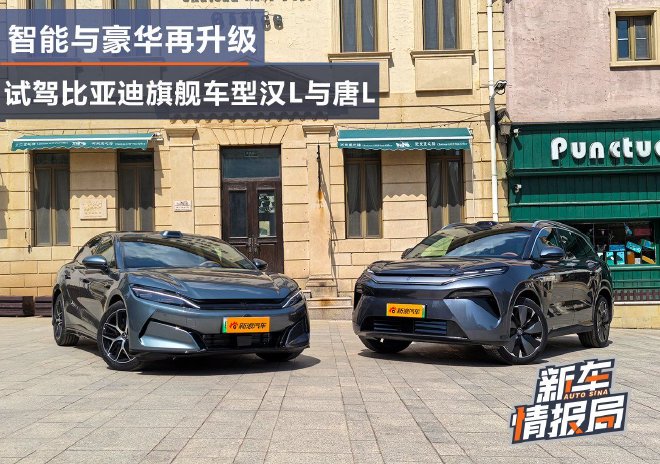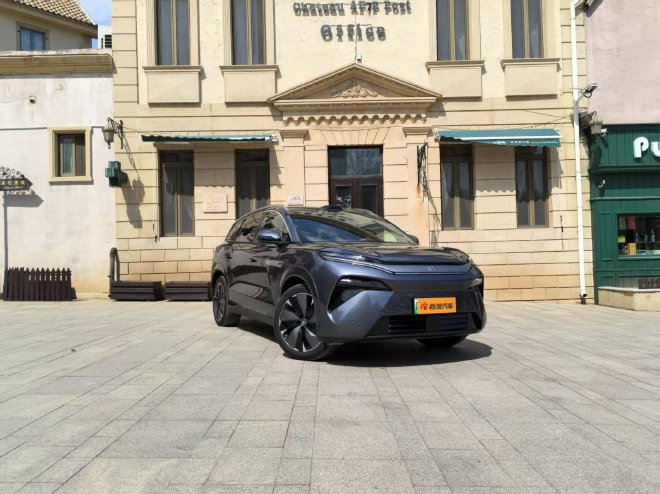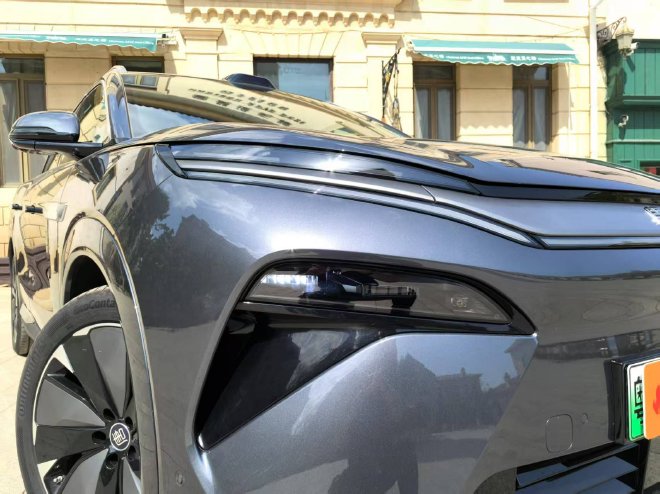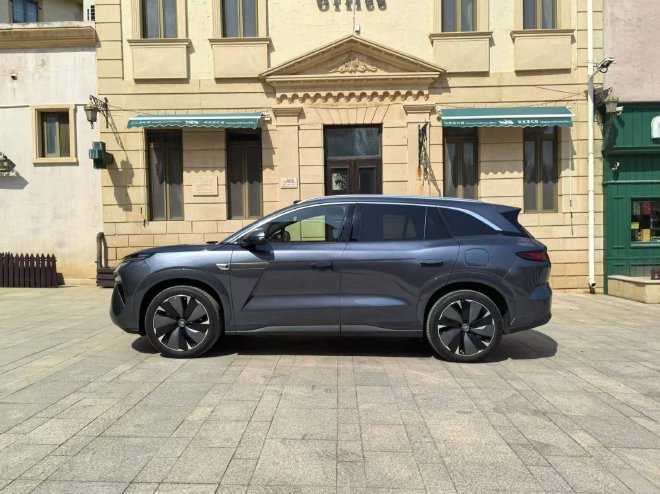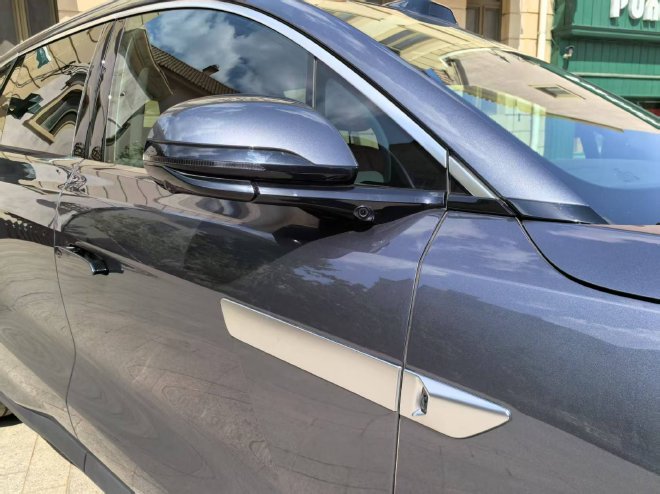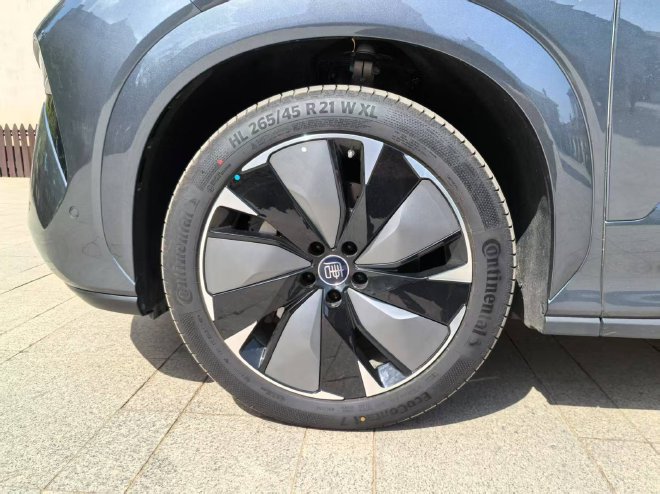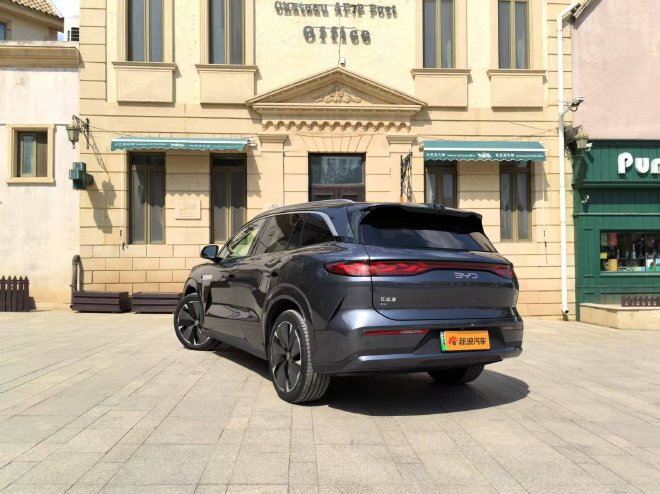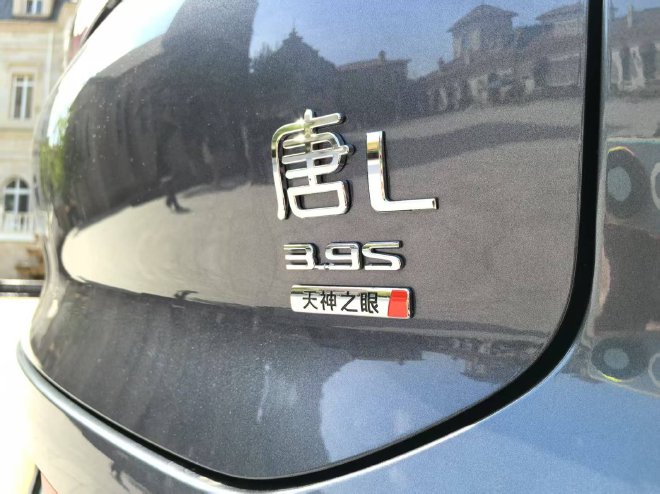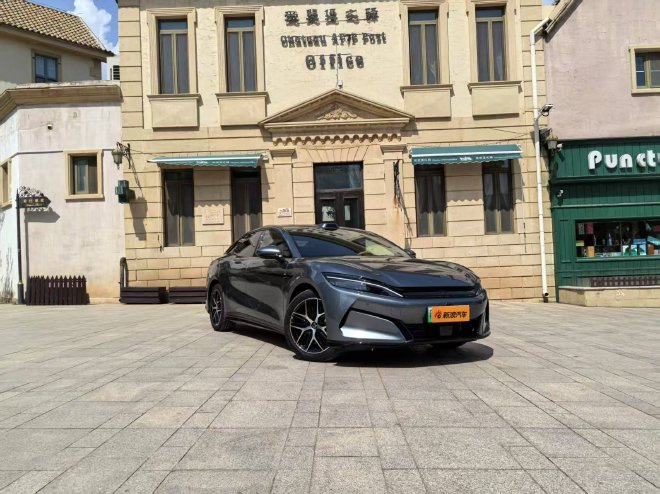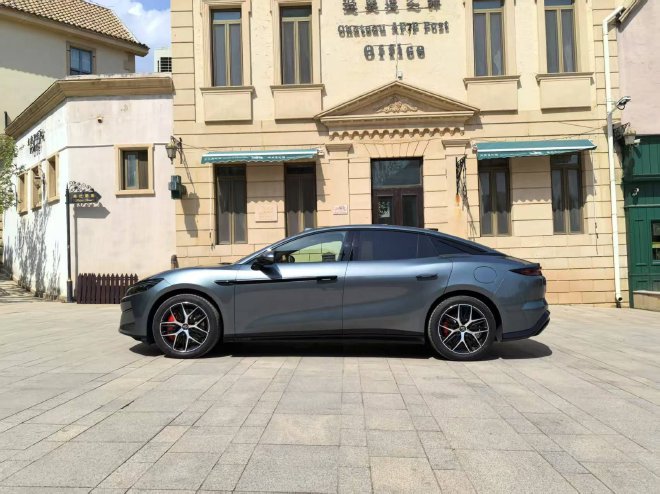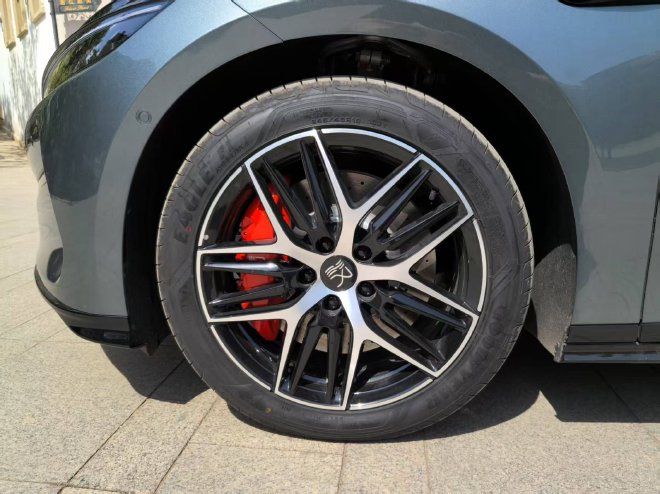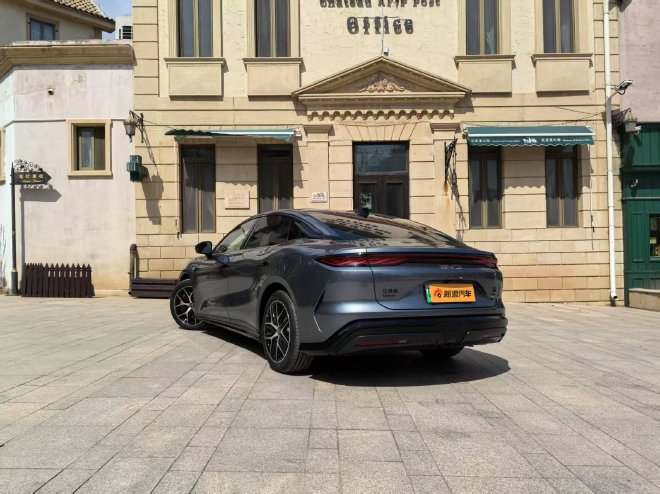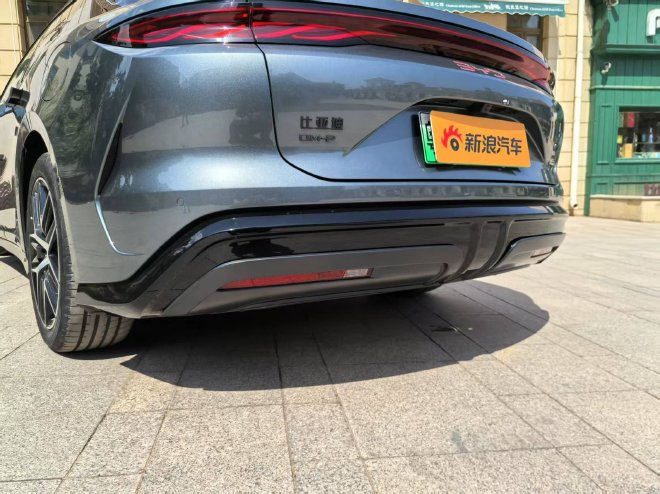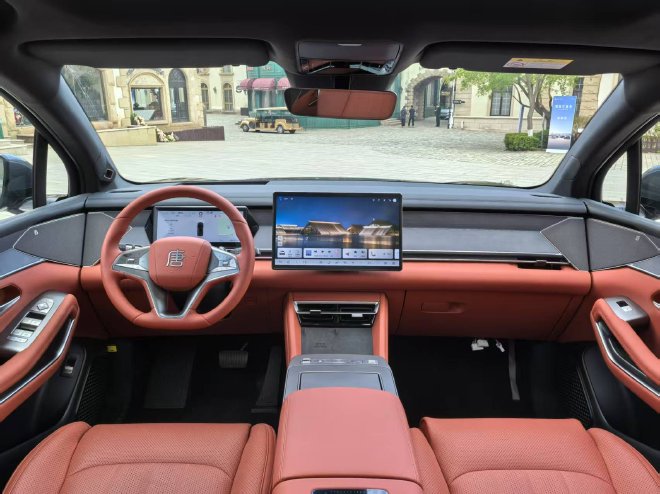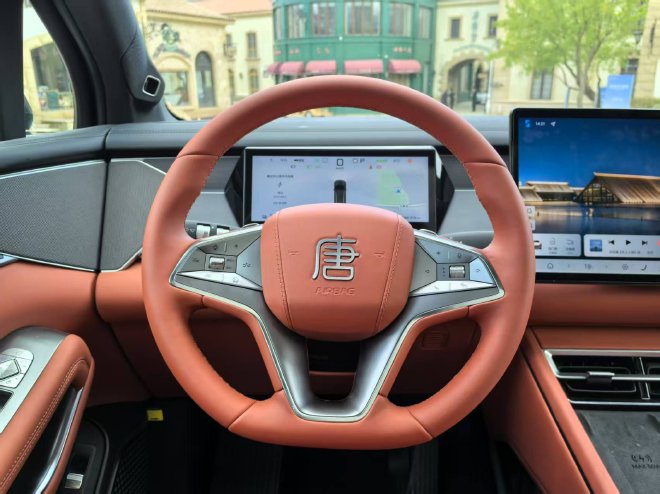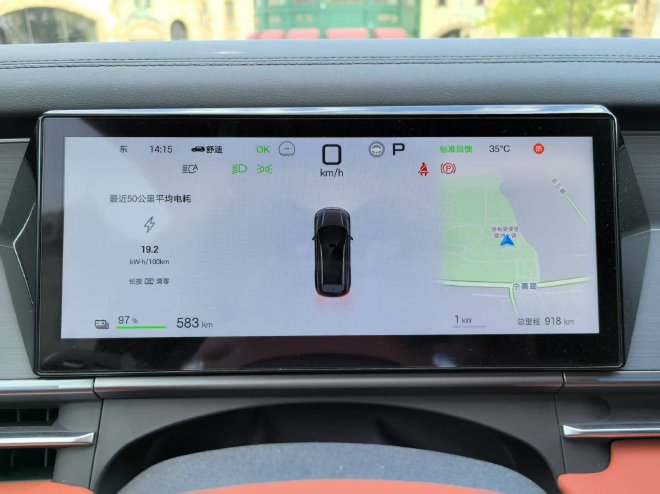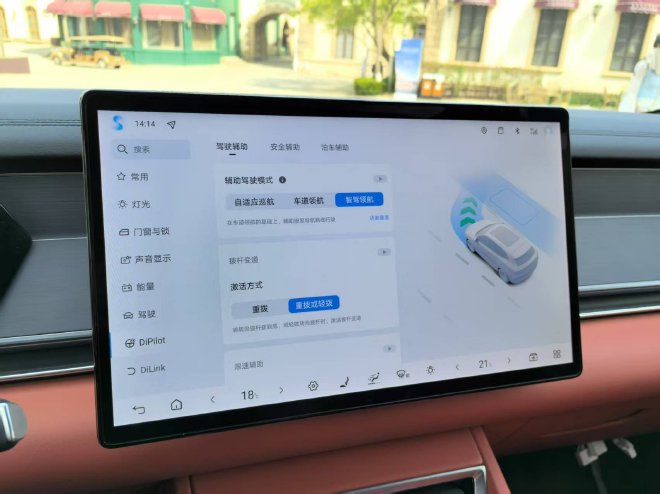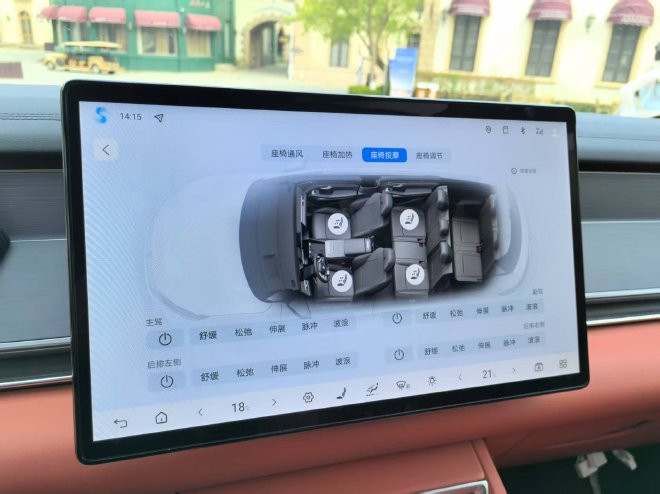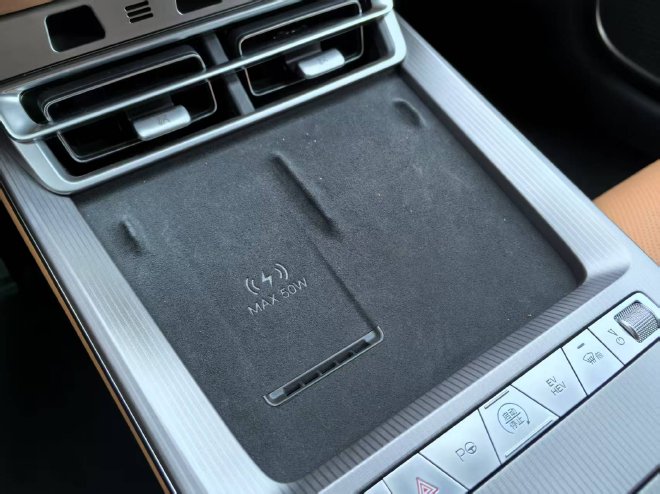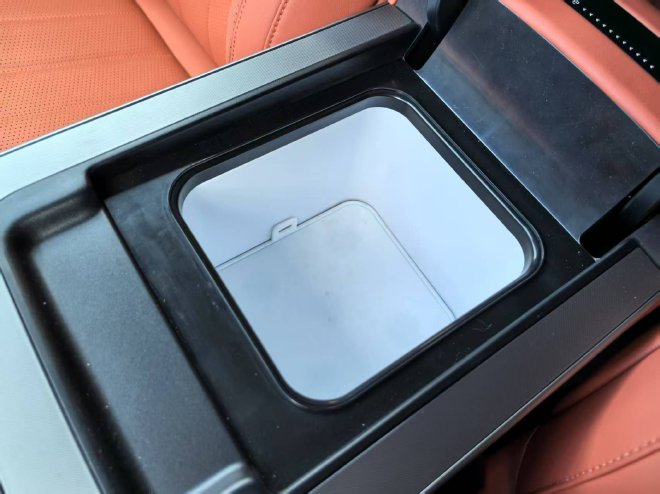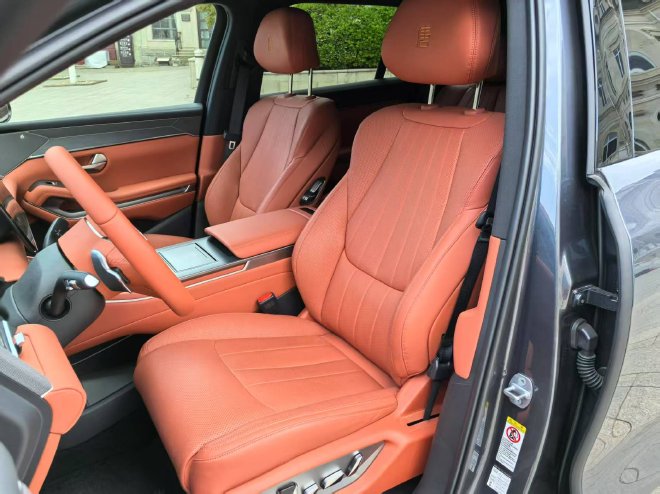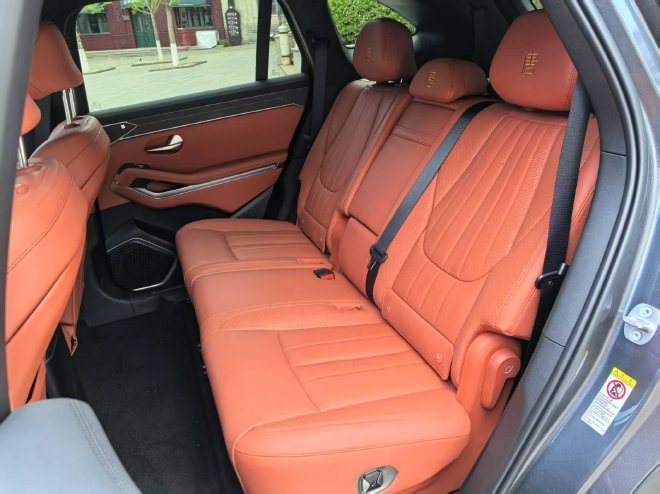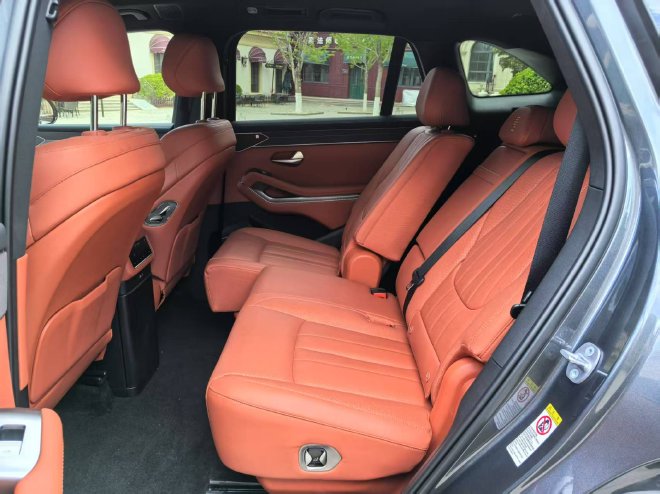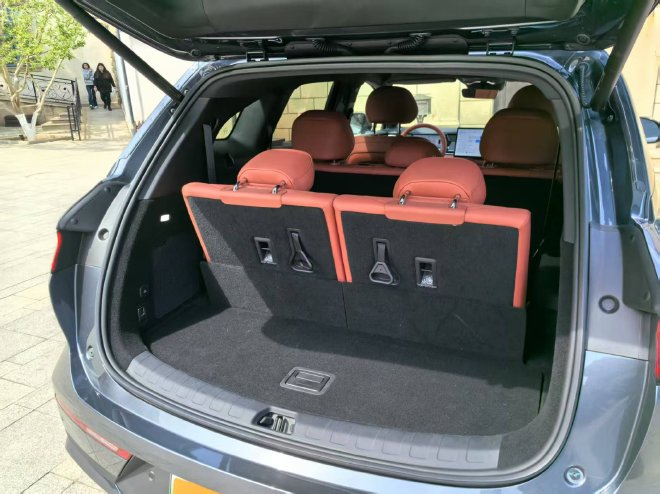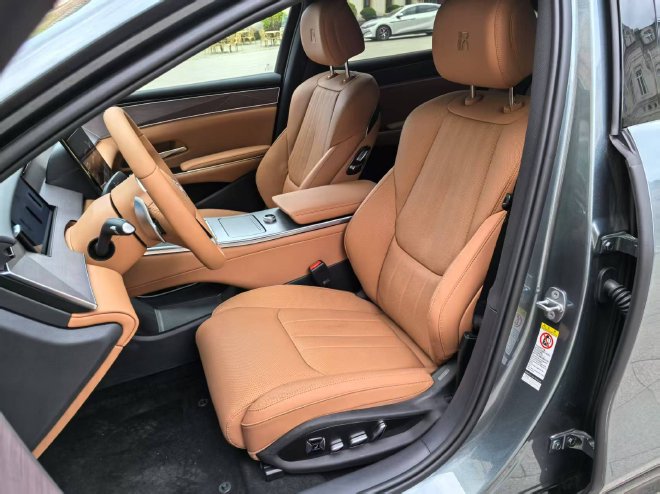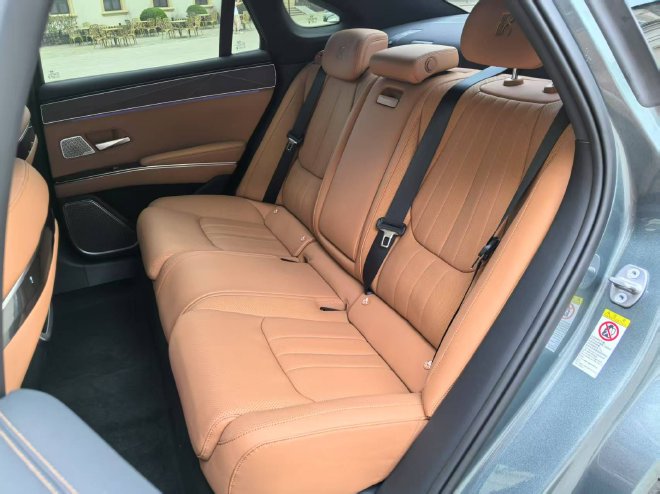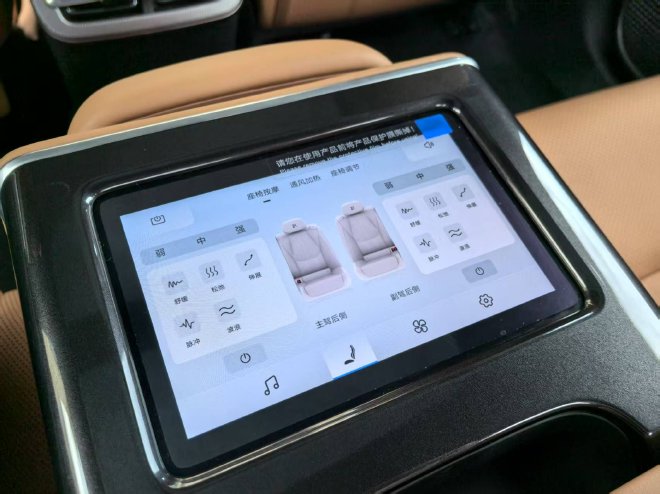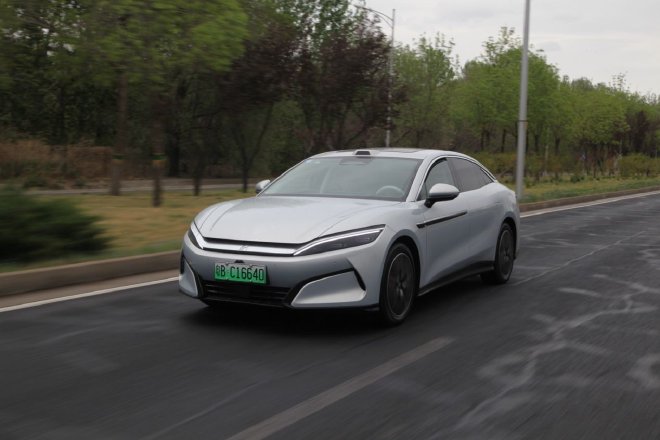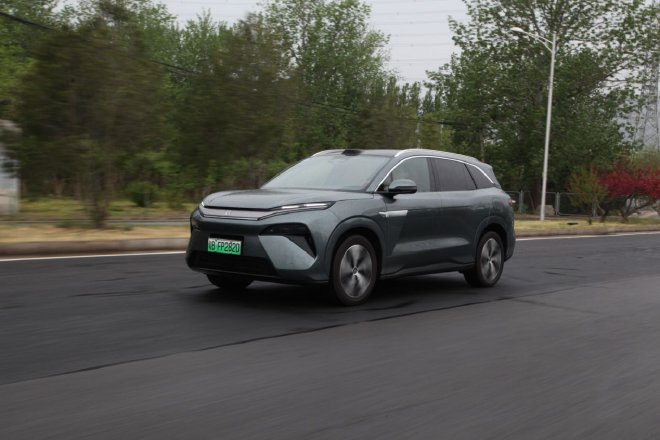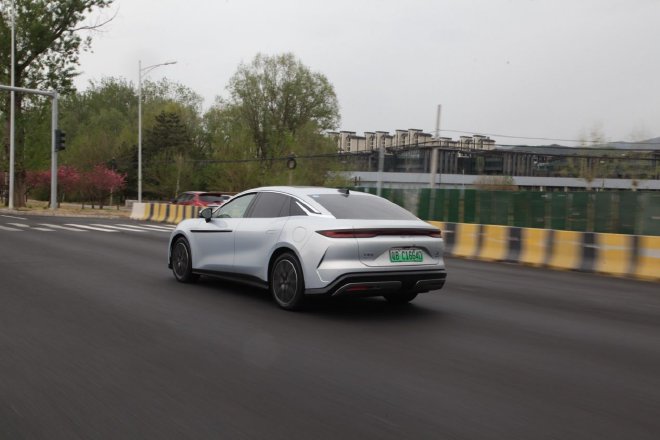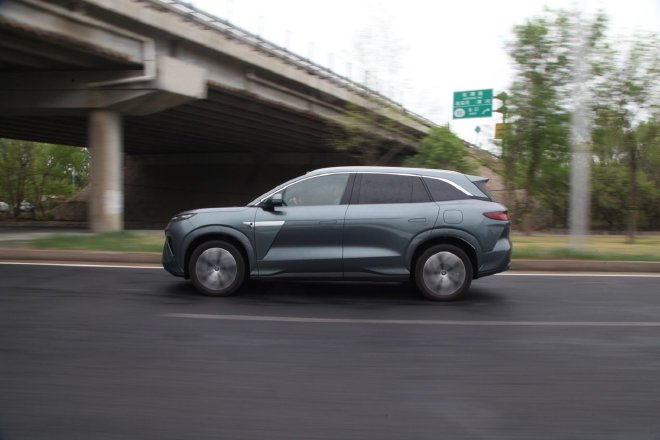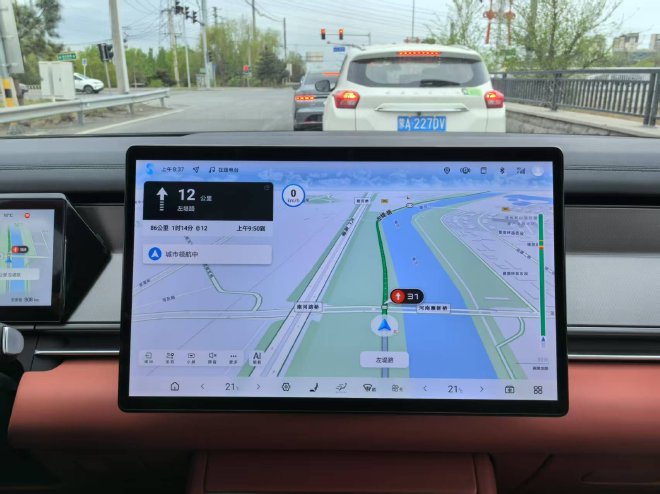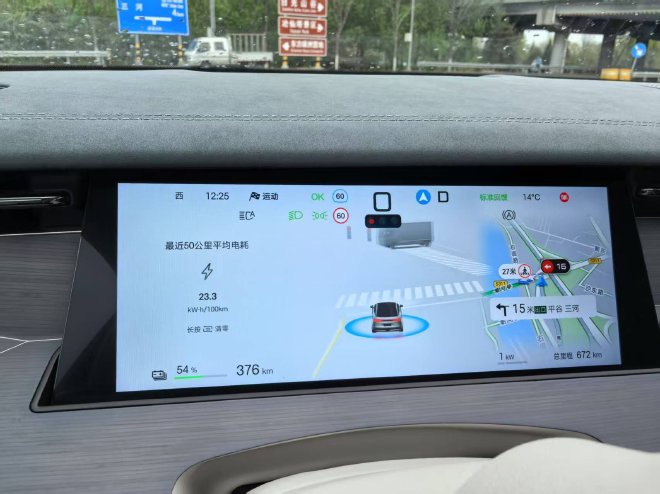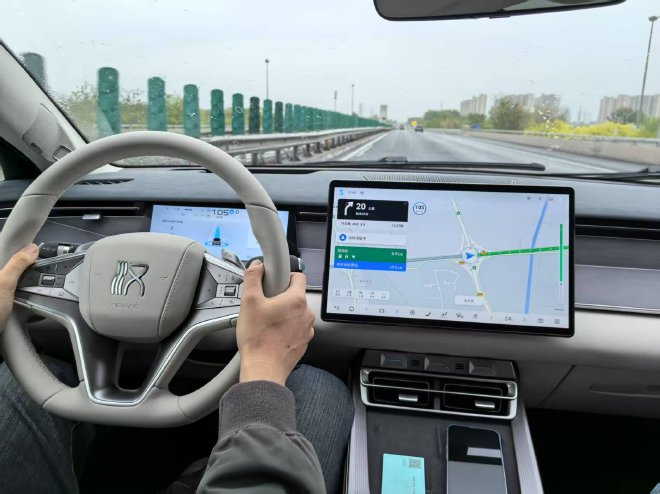For BYD, who can be called the flagship model? I think it must be the Han and Tang models. With BYD gradually launching the fifth-generation DM technology, the advanced Tian Shen Eye smart driving, and megawatt fast charging technology, the flagship models need to evolve. Thus, the Han L and Tang L have emerged. Today, we will test drive these two cars to see if they deserve the title of flagship. Exterior Design
First is the Tang L model. The changes are clear, especially in appearance. It features BYD’s new Dragon Face design. The front looks more powerful. The headlights adopt a split design, enhancing the vehicle’s tech feel.
The continuous light strip and the newly designed daytime running lights enhance the recognition of the Tang L. The headlight assembly features black decorative components, visually widening the front proportions. The front bumper has a fully enclosed design. Below the license plate, it includes an active grille. This design applies to both the pure electric and hybrid models.
When a name includes “L,” it indicates an increase in length and wheelbase. The Tang L measures 5040x1996x1760mm, with a wheelbase of 2950mm. This represents an increase of about 50mm compared to the current model. It will continue to use a 7-seat layout to meet user needs.
The side profile of the Tang L is full and robust. Designers added a silver trim near the front fender and front door. They also included a design similar to a side air vent on the door. This enhances its sporty character. As a new energy vehicle, it features hidden door handles.
The roof features a laser radar. The design includes many cameras at the rearview mirror and front fenders. This setup supports the advanced driving assistance of the Tian Shen Zhi Yan-B. The new car will have 21-inch low-drag wheels. The wheels feature a vortex design and come with 265/45 R21 tires. It looks very powerful.
The changes at the rear are obvious. The car still features a Chinese knot-style taillight. However, the light strips now use a bamboo joint design. When lit, they resemble woven bamboo baskets. The rear badge also uses a glowing logo design. This enhances the car’s recognition significantly.
The Tang L’s badge will feature a red Heavenly Eye logo. This indicates that all Tang L models will include the advanced intelligent driving assistance system, known as Heavenly Eye-B, which also comes with lidar. The electric version’s badge will display “3.9s,” showing its 0 to 100 km/h acceleration time is just 3.9 seconds. This performance is impressive for a mid-to-large SUV.
The design of the Han L remains consistent with the current Han model. It features many upgraded details. The front still uses dragon whisker-style daytime running lights. All versions share the same design. The DM-p model adds more black elements, such as the center trim and the front bumper’s decorative strip. These parts feature a sportier black finish.
The dimensions of the Han L increased. Its length is 5050 mm, width is 1960 mm, and height is 1505 mm. The wheelbase measures 2970 mm. The side design retains a coupe-like shape. A black trim on the front door extends to the hidden door handles. This enhances the vehicle’s side recognition.
The DM-p model of the Han L features a dual-spoke wheel design. The EV version uses an aerodynamic style. Both models come with red brake calipers. Many young consumers appreciate this. After all, Han L aims to be the first flagship model for young people.
The design of the rear section has not changed much. The continuous Chinese knot tail lights remain. The rear logo features a luminous design, which ensures high recognition when lit. Although it is a sedan, the trunk includes an electric switch. This design is very practical.
The rear bumper looks sporty and stylish. The black decorative panel widens the rear. Its design is visually appealing. The DM-p model features black rear badges. This matches the overall design style perfectly. Interior design.
The interiors of the Tang L and Han L will upgrade to the Di-Link 150 cockpit. They share similar layouts, designs, and materials, with minor detail differences. Both cars will feature a 15.6-inch central control screen. They will replace the electronic gear shift with a traditional gear lever.
The steering wheel feels excellent. It has traditional physical multifunction buttons. This design minimizes the chance of accidental operation. Behind the steering wheel, two smart driving levers sit. Pressing one activates smart driving. It’s very convenient.
The LCD dashboard displays vehicle information. Users can switch the interface to full-screen map mode. This feature feels very high-tech. Both cars also come with a HUD heads-up display. This function is useful for city driving and highway travel.
The central control screen operates smoothly. The UI design has upgraded. We placed common functions at the bottom of the screen for easy access. The screen supports online navigation, entertainment, phone connectivity, voice interaction, remote control, and OTA upgrades. It meets our daily needs completely.
We can quickly adjust the vehicle’s air conditioning, driving mode, drive type, smart driving, parking, seats, and refrigerator through the screen. Voice interaction controls more functions. It offers high recognition rates and fast processing speeds. It also supports continuous multi-voice conversations.
Both cars feature a dual-layer central console. The upper layer includes a 50W wireless charger for phones. This adds high practicality. Behind the charging panel, a few physical buttons allow quick adjustments for driving mode, air conditioning, and volume. The start button sits in the middle. New users should familiarize themselves with it.
The two cars differ in a few ways. The Han L has three fragrance ports above the air conditioning vents. The Tang L places them on the second level. In the refrigerator section, the Han L allows temperature settings via the screen and a knob. The Tang L controls temperature through the central screen and a touch panel in the back. The Tang L’s refrigerator opens from the top and the rear. This design is very thoughtful. Seats and space.
First, let’s discuss the Tang L. It features a 7-seat layout. The front seats offer excellent support and comfort. They use skin-friendly materials. Both front seats have leg rests. They support heating, ventilation, massage, and memory functions.
The second-row seats move forward and backward. They adjust the backrest angle. The seats also have heating, ventilation, and massage functions. These features greatly enhance comfort. The longer wheelbase provides ample legroom. Even a 1.8-meter adult can sit comfortably and cross their legs.
The right side of the second row has a quick entry feature. This helps third-row passengers get in and out easily. I find the comfort of the third-row seats quite good. They do not feel like small benches. The headroom feels spacious. Even adults sitting in the back do not feel cramped.
The Han L seats offer high comfort. The front seats match those in the Tang L. They have similar functions. The second row differs. The Han L’s second-row seats support heating, ventilation, and massage. The central armrest features a small touchscreen. Users can adjust music, air conditioning, seats, and other functions. This adds a touch of luxury. Driving Experience Now, let’s discuss the driving experience of both models. The Tang L and Han L will both offer EV and DM versions. The electric models will feature megawatt fast charging. Just five minutes of charging boosts the range by about 400 km. That’s nearly 2 km of range added every second. This capability is impressive.
The DM version offers better fuel efficiency and range. Take the Han L as an example. It has an electric range of 200 km. The total range reaches 1400 km. It accelerates from 0 to 100 km/h in 3.9 seconds. The fuel consumption when the battery is depleted is 3.9 L. Such performance is unmatched by typical hybrid models.
The Tang L is a mid-size SUV. It feels light when driving. Acceleration and steering feel effortless. The vehicle offers various driving modes to meet different consumer needs. Both the electric and hybrid versions provide strong acceleration from a standstill or during mid-range speeds. The push-back sensation is noticeable. The Han L performs even better, especially during mid-range acceleration. You can feel it lifting slightly, showing its ample power reserves.
The Tang L and Han L feature a front double-wishbone and rear five-link suspension. This setup suits flagship models. Both cars include the Yun Nian-C intelligent damping body control system and the Yun Nian predictive system. These systems help the suspension absorb excess vibrations over bumps. At high speeds in corners, the suspension provides strong support. This design prevents body roll and maintains a comfortable driving environment.
Both models scored above 95 in quietness. The electric and hybrid versions effectively control wind noise. Even at 120 km/h, wind noise remains low. Tire and chassis noise are also well controlled. Inside the car, we can maintain a normal conversation.
Finally, let’s discuss the Heavenly Eye-B feature in these two cars. With the addition of lidar, the Tang L and Han L will both feature the Heavenly Eye-B. This system supports urban NOA and high-speed NOA navigation. Users can access it immediately upon delivery, without waiting for regional activation.
In urban areas, its NOA navigation supports lane recognition, lane centering, rear vehicle alerts, automatic lane changes, lever lane changes, traffic light stopping and starting, intelligent following, driving strategy, and roundabout navigation. It achieves a high recognition rate. It handles issues promptly. It even anticipates problems to avoid dangers.
In terms of high-speed NOA navigation, both vehicles performed exceptionally well. Once on the highway, I could activate the navigation feature directly. The acceleration and lane changes happened smoothly, without any hesitation. This navigation feature also handles ramp changes, sharp turns, intelligent overtaking, and avoiding large vehicles. It maximizes the safety of everyone in the car. Summary: After a day of test driving, we feel that the Tang L and Han L truly live up to the flagship twin star title. Both cars excel in appearance, interior, features, power, and intelligent driving. If you ask me my favorite aspect, I will answer without hesitation: their chassis tuning and intelligent driving performance. The chassis feels particularly solid. Such a sense of weight requires years of refinement. What do you think of these two cars? Let’s discuss.
